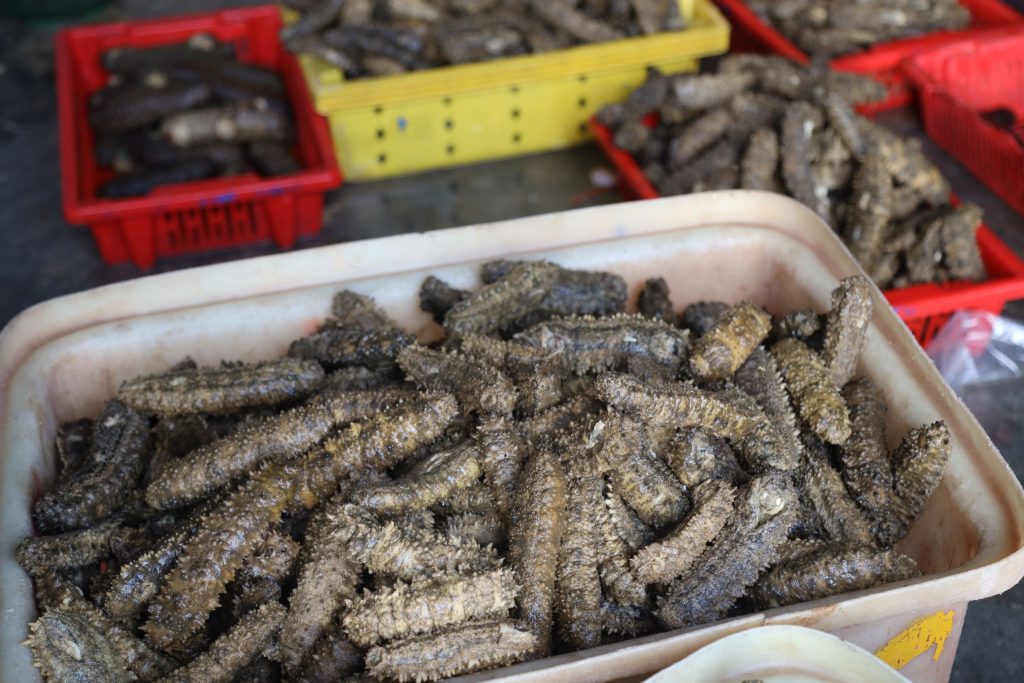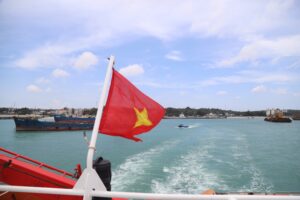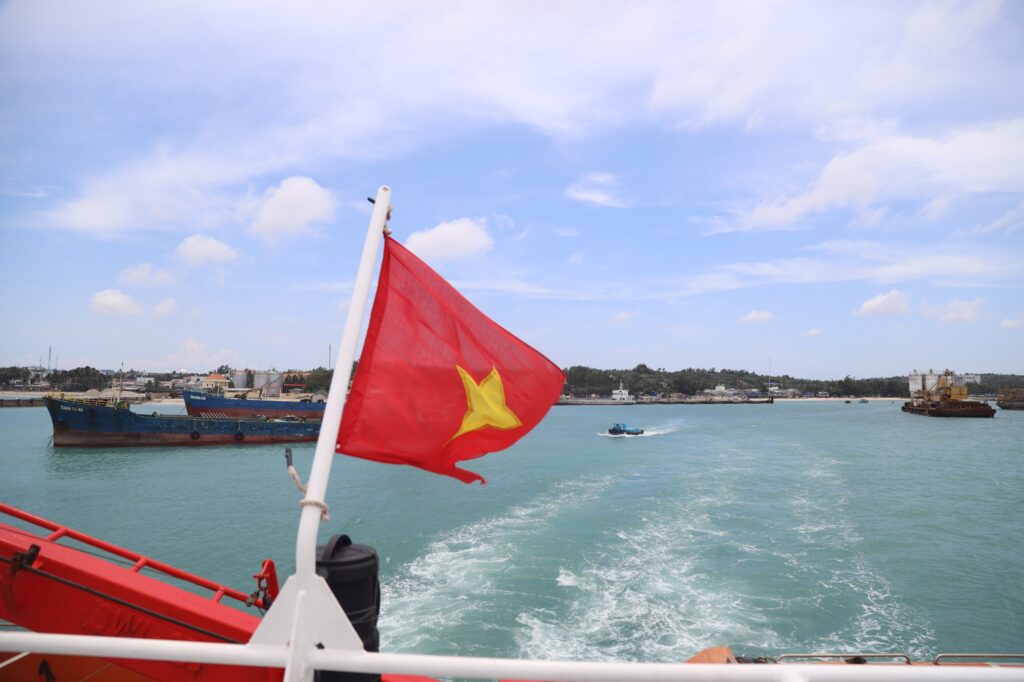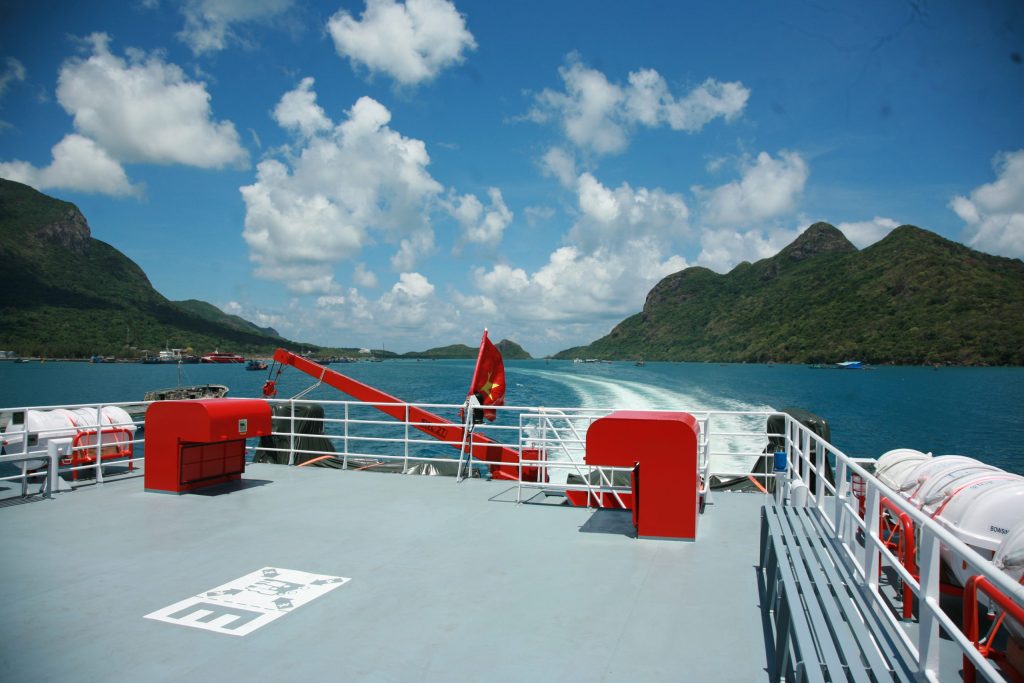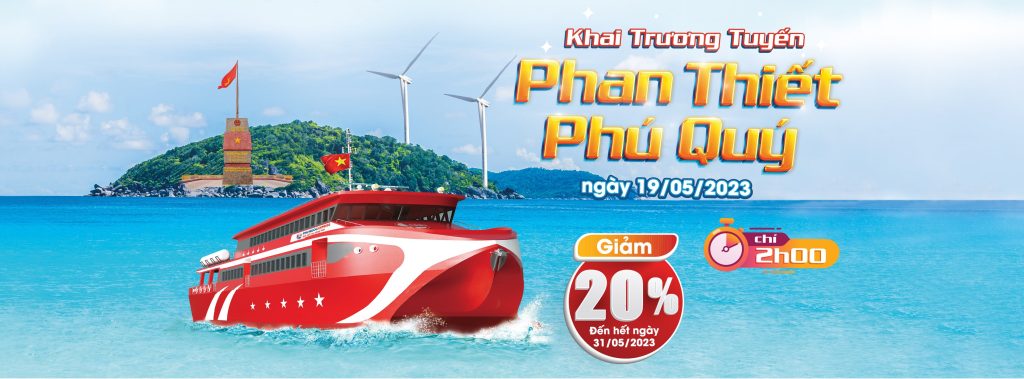The waters around Phú Quý Island are home to a rich diversity of sea cucumbers (hải sâm, also locally known as đồn đột), which thrive approximately 1,000 meters offshore. These marine creatures are highly valued for their nutritional and medicinal properties.
Although sea cucumbers from Phú Quý are mostly exported, as they are not yet fully appreciated by domestic tourists, those familiar with their benefits know that consuming sea cucumber is believed to support kidney health, boost vitality, and restore internal balance. Because of these medicinal values, sea cucumbers often feature in lavish feasts and are a valuable export product, favored by markets in Southeast Asia, Canada, the United States, Australia, and more.
According to local fishermen, there are around 100 different species of sea cucumber around Phú Quý, each varying in color, size, and name. Of these, about ten are commonly recognized and classified by locals, including: vú trắng (white breast), vú đen (black breast), hắc (dark), nâu (brown), rít, táo (pomegranate), gai thơm (spiny fragrant), tói phương, đỉa da trắng (white-skinned leech), and đỉa nậm. Their colors range from milky white like rice water to deep brown, golden yellow, black, and green-spotted.
Among the common varieties harvested, some fetch only tens of thousands of đồng per kilogram, while premium types like the vú sea cucumber can command prices starting at one million đồng per kilogram. This particular type has two rows of small protrusions along its belly, hence the name vú nàng (maiden’s breast). There are also two types: vú nàng trắng (white) and vú nàng đỏ (red). Even when purchased directly from fishermen, vú nàng trắng can cost nearly one million đồng per kilogram. However, harvesting them requires nighttime diving, as they are rarely seen during the day.
Phú Quý has long had abundant sea cucumber resources, and these creatures were once considered a high-class delicacy, or hải vị. They are typically stewed with traditional Chinese medicinal herbs alongside pigeon meat, black chicken, pork trotters, ox feet, or deer tendons, or soaked in rice wine for medicinal use.
Sea cucumbers are most plentiful around late September, when the seawater becomes clear. In the past, they were abundant along the island’s shores, but locals, unaware of their high value and medicinal potential, seldom harvested them. It wasn’t until about 6–7 years ago, with the rise of tourism and outside contact, that islanders began to realize the sea cucumber’s economic worth and started harvesting them extensively. As a result, sea cucumber stocks around Phú Quý have steadily declined. Today, fishermen must venture far offshore—sometimes up to 27 nautical miles and dive to depths nearing 20 meters—to find them. Even then, some fishing trips yield just 5 to 10 kilograms.
Sea cucumbers are becoming increasingly scarce. In years past, they could be found easily along rocky shores after a storm. When locals were children, they recall seeing them washed up in the sand after heavy waves—but no one bothered to collect them, as seafood was abundant and tourism had yet to develop. Now, even the smallest sea cucumbers are harvested due to high demand.
Sea cucumbers are prized for their medicinal qualities, widely used to promote overall health and treat various conditions. These include kidney support, vitality enhancement, post-illness recovery, prevention and treatment of atherosclerosis, normalization of protein and lipid metabolism in the blood, and improved oxygen absorption in the heart and liver.



